|

|
Getting to Yes:
As long as you do not seem to imply that the other side’s interests are unimportant or illegitimate, you can afford to take a strong stance…
|
52 |
|

|
Getting to Yes:
You will satisfy your interests better if you talk about where you would like to go rather than about where you have come from…
|
54 |
|
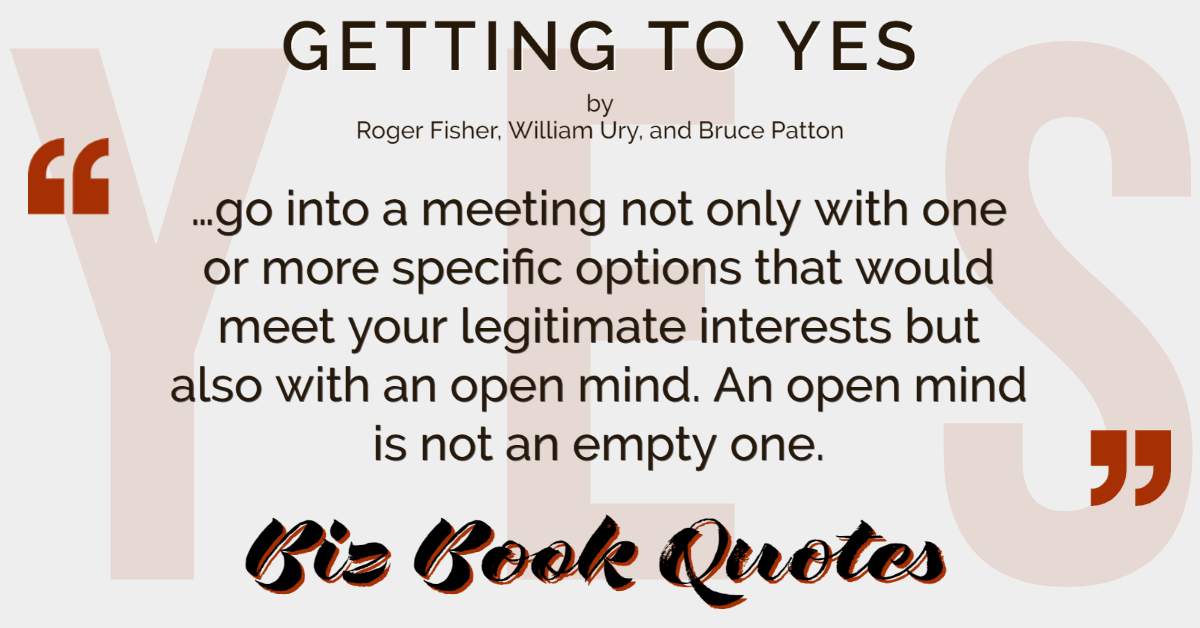
|
Getting to Yes:
…go into a meeting not only with one or more specific options that would meet your legitimate interests but also with an open mind. An open mind is not an empty one.
|
55 |
|

|
Getting to Yes:
Be concrete but flexible. In a negotiation you want to know where you are going and yet be open to fresh ideas.
|
55 |
|

|
Getting to Yes:
Often the wisest solutions, those that produce the maximum gain for you at the minimum cost to the other side, are produced only by strongly advocating your interests.
|
56 |
|
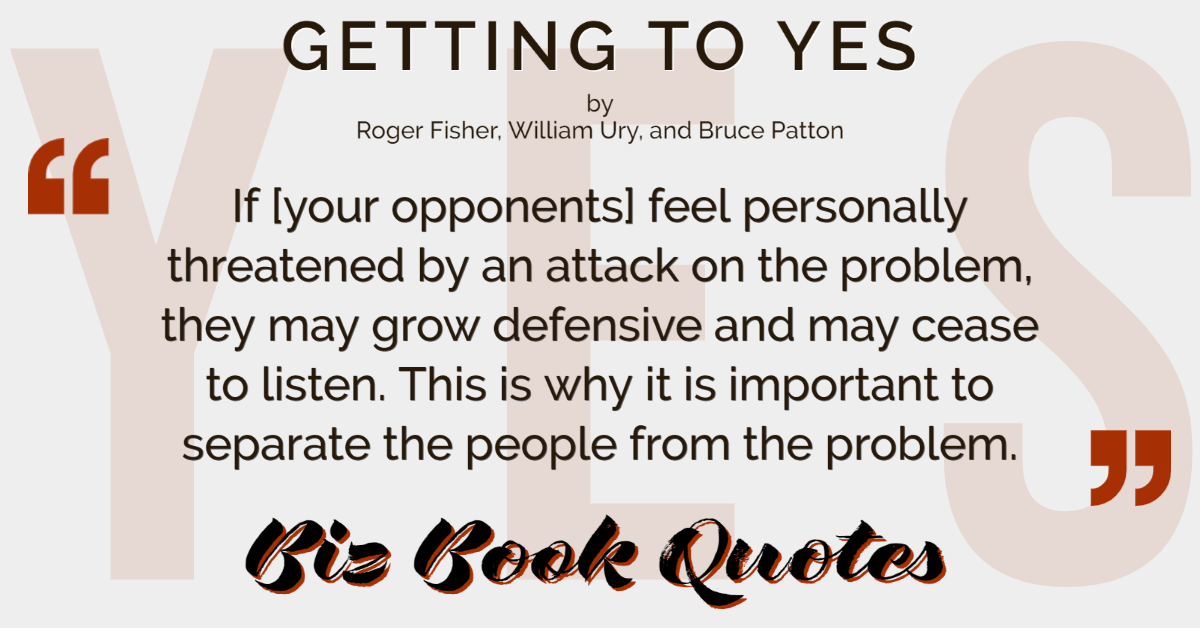
|
Getting to Yes:
If [your opponents] feel personally threatened by an attack on the problem, they may grow defensive and may cease to listen. This is why it is important to separate the people from the problem.
|
56 |
|
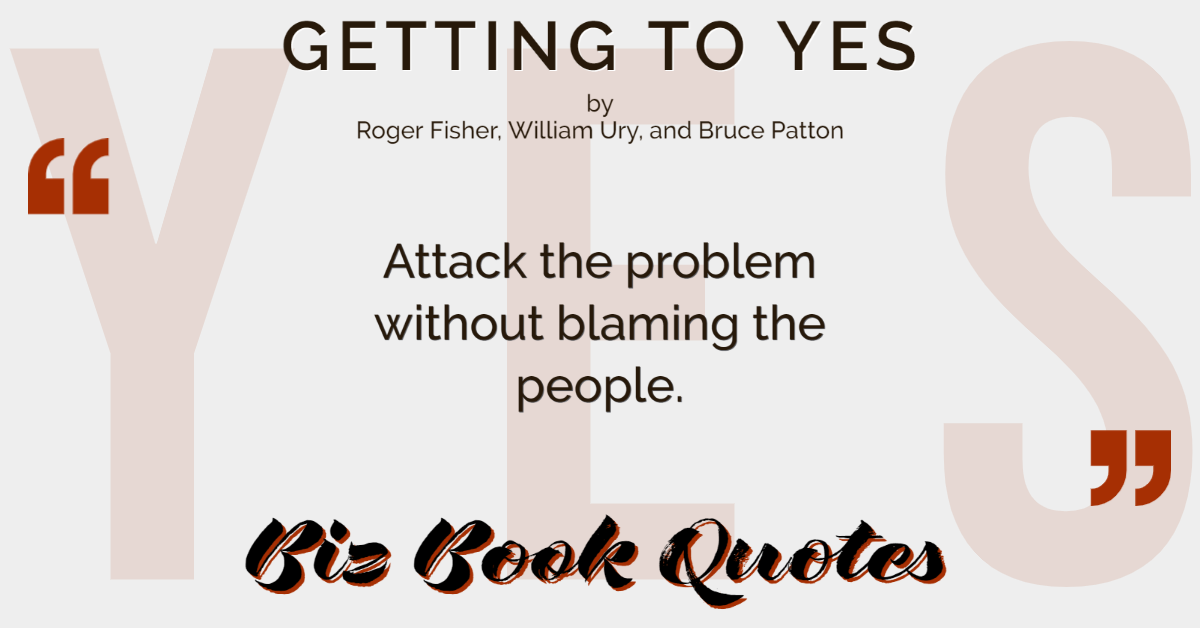
|
Getting to Yes:
Attack the problem without blaming the people.
|
56 |
|

|
Getting to Yes:
It is the combination of support and attack that works; either alone is likely to be insufficient.
|
57 |
|
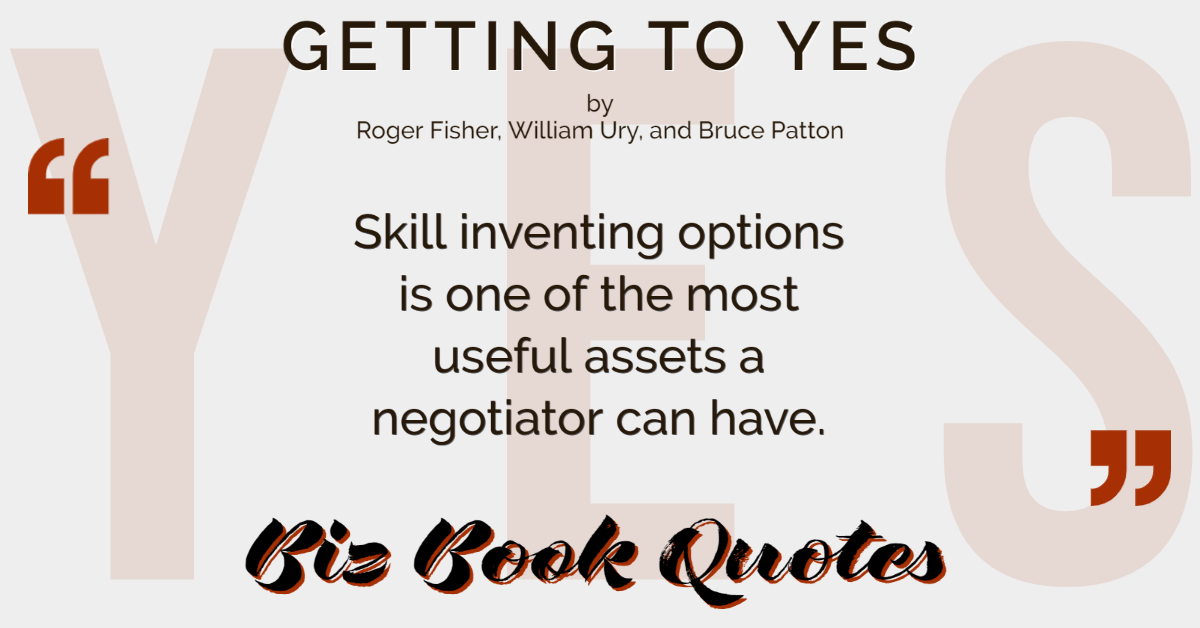
|
Getting to Yes:
Skill inventing options is one of the most useful assets a negotiator can have.
|
58 |
|
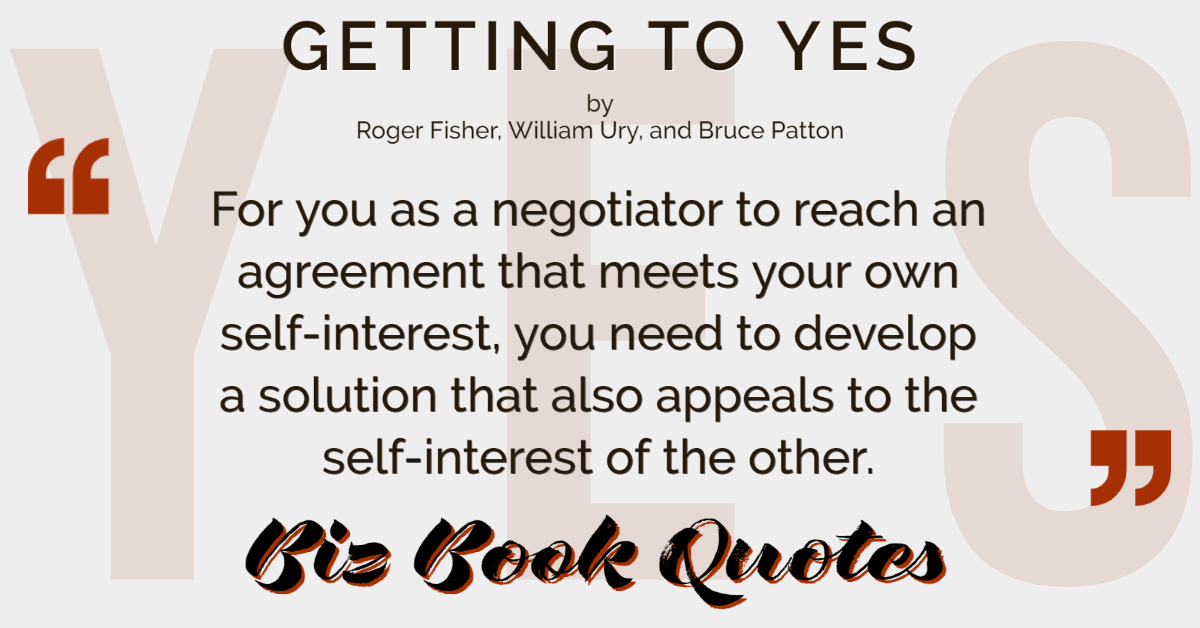
|
Getting to Yes:
For you as a negotiator to reach an agreement that meets your own self-interest, you need to develop a solution that also appeals to the self-interest of the other.
|
61 |











